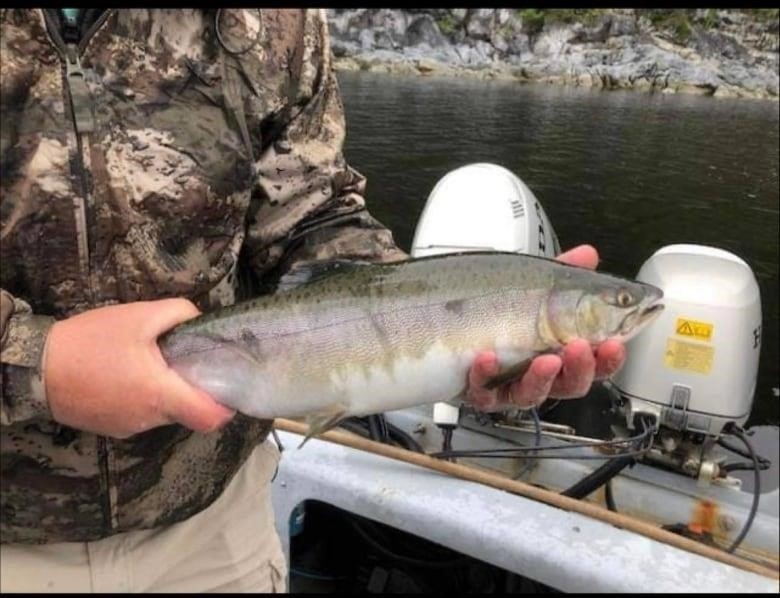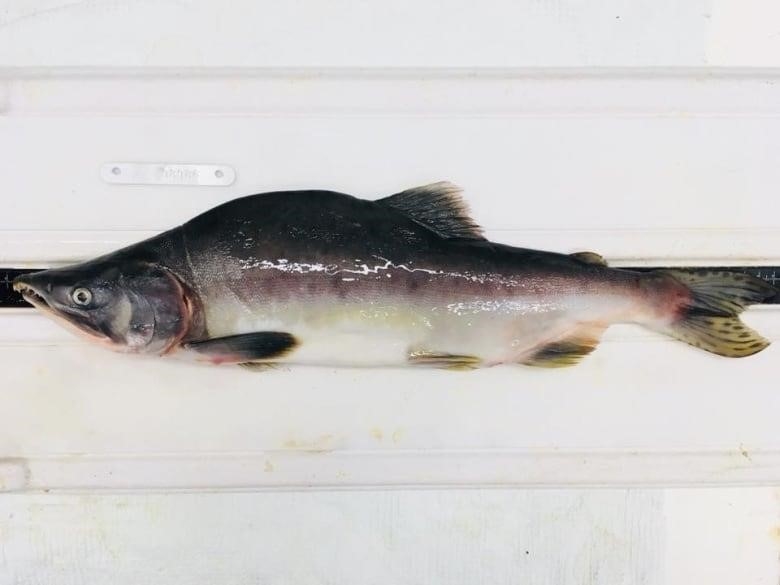Most pink salmon live in the Pacific and Arctic oceans

Recently, pink salmon from the Pacific have been seen in the White Bay area of Newfoundland. They may have traveled distances that were unimaginable before to get to the Atlantic.
Pink salmon, which are also called humpback salmon, are usually found in the Pacific and Arctic oceans, but in recent years they have been seen off the northern coast of Newfoundland. The last big sighting, which Neville Crabbe calls the start of a new wave of sightings, was in 2017.
The executive director of communications for the Atlantic Salmon Federation, Crabbe, told CBC Radio last week, “It kind of has that long body and silver colors with some spots and other markings, but it’s easy to tell that it’s not an Atlantic salmon when you look at it a little closer.”
“As far as I know, the first pink salmon from this most recent wave was found in 2017 in the Gander River.” And another pink salmon was caught near Cartwright that year.”
Pink salmon have also been found in rivers in Labrador, Quebec, and other parts of Atlantic Canada and the eastern United States.
Even though no one knows how long the pink salmon has been in provincial waters, efforts have been made in other parts of the world to stock the fish.
Crabbe said that the first big stocking program took place in Russia in the 1960s.
“They were taken from Sakhalin Island, a big island in the Russian Pacific, and put back into rivers that flow into the White Sea as fry,” he said. “It was tried in the ’60s and ’70s, but the fish didn’t bite…. In the ’80s and ’90s, the Russians tried it again, and this time the fish ate it. Since then, they’ve been all over Scandinavia.”

But Russia wasn’t the only place that tried out stocking programs, and one of those places isn’t too far away.
Crabbe said that between 1959 and 1965, Fisheries and Oceans Canada also stocked fish in Placentia Bay.
Even though the stock was a failure, marine biologist Cyr Couturier thinks it’s possible that the fish seen came from Canada’s failed attempts to bring pink salmon into provincial waters.
“We did have some success when we brought these to the south coast in the 1960s. “After one or two years, it did find some spawners, including some that spawned more than once,” said Couturier.
“We have it here in the waters off Canada’s east coast. It has also become naturalized in the state of Maine, and there are many signs that these populations are able to keep going on their own.

Couturier said that other things, like climate change and the search for a new place to spawn, could be bringing the salmon to Newfoundland and Labrador.
Both Crabbe and Couturier say it’s too early to say what effect the salmon will have on Atlantic salmon populations, but the North Atlantic Salmon Conservation Organization considers pink salmon an invasive species.
Couturier said that more work needs to be done to figure out where the fish came from, but he thinks that the effects on the native population will be small.
“It shouldn’t be a really big threat,” he said.
Find out more from CBC Newfoundland and Labrador
